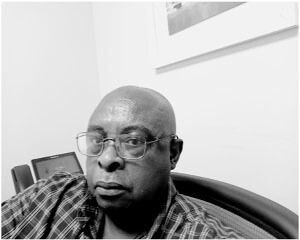The Historical Language Background
As a point of departure, Balondo (Balondo) is a populated place (class P-Populated Place) in Democratic Republic of the Congo. It is located at an elevation of 381 meters above sea level. To be precise, Balondo people historically settled along the coastal banks of the Nyanga and Luapula Rivers in Democratic Republic of the Congo. In about the 1100s they migrated to Ata Akpa (Calabar today) and occupied the Calabar Riverbank in the present day Calabar South Local Government Area (SLGA) when they arrived there in about the 1107s. This journey is known as the FIRST VOYAGE.

In the 1149s, whereas some Balondo declined the proposed search for another settlement because of the environmental risks in their first primordial home of Ata Akpa, a majority of the Balondo population agreedto relocate to the coastal banks of the Atlantic Ocean in the region that is now Cameroon-specifically in Ekondo-Titi and Bamusso subdivisions where they were believed to be the first settlers, including the entire southwest coastal banks even before the arrival of Fernando Po in 1472. This journey would be the people’s SECOND VOYAGE. Finally, the Balondo who did not accompany their siblings stayed inCalabar(original balondo homeland of Calabar SLGA)andhave continued to maintain the dual existential realities inherent in their Efut-balondo identity.

Obanandongo1 of Ekondo-Enene
Generally, the Balondo language is one of the most ancient Central-West African languages studied by European linguists from the 1840s until the 1984s when Julianna Kuperus, an Austrian linguist in collaboration with pure “Balondo deep speakers” published its first grammar book, “The Londo Word”. This book demonstrates vividlythe common properties the Balondo language shares with other African and Indo-European languages: (1) phonology, what it sounds like; (2) morphology, its rules for word formation; (3) syntax, its rules of grammar; (4) semantics, meaning and relations to words; and (5) pragmatics, its use in different social contexts, i.e., the use of verbal and nonverbal language.
Besides meeting the criteria for a real language, it represents, in a very significant way, the source of knowledge, canons of proof, and structures of truth that are the main sources of the Balondo-bakonja (pure balondo) world. For the sake of political correctness, this language has no linguistic ties to the oroko dialect, as any unsuspecting anthropologist and Cameroonian might be led to believe. It is related only to the Lingala language, and in some ways Swahili, Bakweri/Efik (Calabar) languages could be considered its variants or cognates.
Against that backdrop and following in on the footsteps of previous Balondo language scholars, Ms. Queen Daniel Nsima-Imah, a young and intelligent lady linguist (28 years old) who is working on her master’s degree in Linguistics at the University of Uyo, Akpa Ibom State, Nigeria is happily coming to the Balondo Homeland, Cameroon to explore in depththe phonology of this rich and beautiful balondo language.
Her trip will be sponsored entirely by Balondo Cultural Heritage, a nationally recognized Balondo Cultural literacy Association, which was founded in 2012 in Laurel, Maryland, USA by Dr. Aja Oro. The Balondo phonology study will commence on June 18, 2024, andwill beheaded by Ms. Queen Daniel Nsima-Imah, who will be working with ten pure Balondo volunteers that are deep speakers of the pure and uncontaminated balondolanguage-drawn from both Njia Boso [ Lower Balondo] and Njia Mbusa [ Upper Balondo] in the Balondo (baKonja) homeland.
Dr. Aja Oro
Balondo Global Scholar USA
Obanandongo 1 of Ekondo-Nene
+ 1 240 714 9912
ajaoro200@yahoo.com